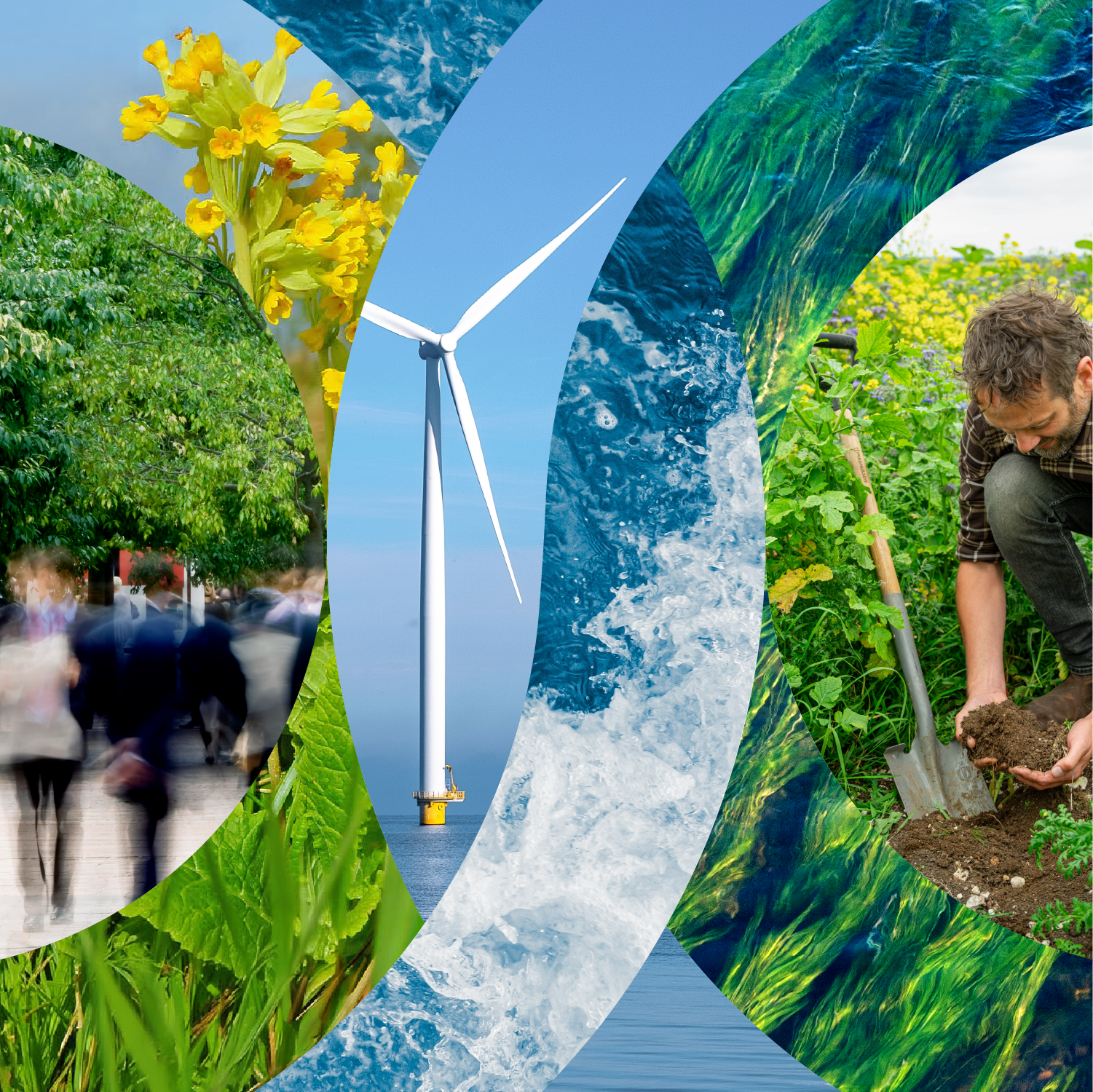
Interconnectivity at heart of The Crown Estate’s new Nature Recovery approach
- The Crown Estate
The Crown Estate has published a new ambition for Nature Recovery that will drive a consistent approach across its diverse assets on land and seabed, following a 12-month engagement process with a wide range of nature experts and organisations.
To ensure cohesive action across a diverse array of habitats and interconnected ecosystems, The Crown Estate sets out company-wide nature goals and commitments that will raise the bar on its ambitions for Nature Recovery. These goals set the focus of its delivery plan and there will be a further update published in 2025 with public targets and KPIs.
The ambition brings together The Crown Estate’s work on nature recovery from across its portfolio, integrating the approach with addressing other national needs including the development of offshore wind to enable secure and affordable energy; building homes; developing places; supporting food production; and creating economic opportunity.
This requires a joined-up, systemic and partnership-led approach that maximises its contribution to not just nature recovery, but also efforts to reach net zero and an energy secure future, while supporting thriving communities.
The Crown Estate has set three new goals to drive holistic delivery on nature recovery and building on activities where The Crown Estate is already delivering an impact, including;
Best practice in conservation across its Windsor Estate, rapid action on tree and hedgerow planting across its rural estate with its £10m environment fund, and more systemic approaches to embed nature across leases with new Environmental Farm Based Tenancy agreements.
Existing activities in its Marine business to prioritise nature’s nature recovery by leveraging its best-in-class data and mapping capabilities, supporting the development of high-integrity marine natural capital markets and funding essential research through its world-leading Offshore Wind Evidence & Change (OWEC) programme.
Our approach to increasing nature and biodiversity in urban environments, from the Park-to-Park initiative with Westminster Council, to create a permanent green corridor in the heart of London’s West End; to enhance nature, wellbeing and climate change resilience, to regional initiatives such as reintroducing Beavers to Rushen Lakes Retail Park happening in October.
To help set its ambition The Crown Estate consulted over 40 nature experts from leading ENGOs, public bodies, SMEs, corporates, academics and trade unions across England, Wales and Northern Ireland, gathering insights and testing and validating its approach over a 12-month consultation period.
The goals underpinning The Crown Estate’s approach are aligned with domestic and global ambitions for nature recovery, helping to halt nature’s decline by 2030 and contributing to nature’s recovery by 2050:
Goal 1: Deliver increased biodiversity - deliver a measurable increase in biodiversity for The Crown Estate’s holdings across land and sea by 2030, supporting climate adaptation and resilience.
Goal 2: Protect and restore freshwater, marine & coastal systems - identify and tackle causes of water degradation and water stress in areas within The Crown Estate’s influence by 2030.
Goal 3: Increase social and well-being benefits from nature - reconnect people with nature, delivering measurable health and well-being benefits by 2030, including community engagement with nature across our projects and developments.
To deliver these goals The Crown Estate has set out four key commitments to embed nature recovery across its business:
Understand Nature: Identify high quality data to inform decision-making
Design for Nature: Embed nature as a core priority in its management of land and seabed
Fund Nature: Unlock capital at scale to protect and restore nature
Partner for Nature: Collaborate at scale to accelerate nature recovery
Anna Swaithes, Chief Sustainability Officer at The Crown Estate, said: “We are setting nature goals and commitments that raise our ambition to deliver joined up action across land and sea. This approach to nature will interconnect with our approaches to net zero, placemaking and communities, ensuring we create lasting and shared prosperity for the nation.”
“Consulting with a wide range of expert stakeholders has enabled us to understand how our activities fit within a systems context, including ecosystems and economic systems. It’s crucial we create space for collaboration and engagement at a national and local level as we know that nature recovery cannot be delivered in isolation.”